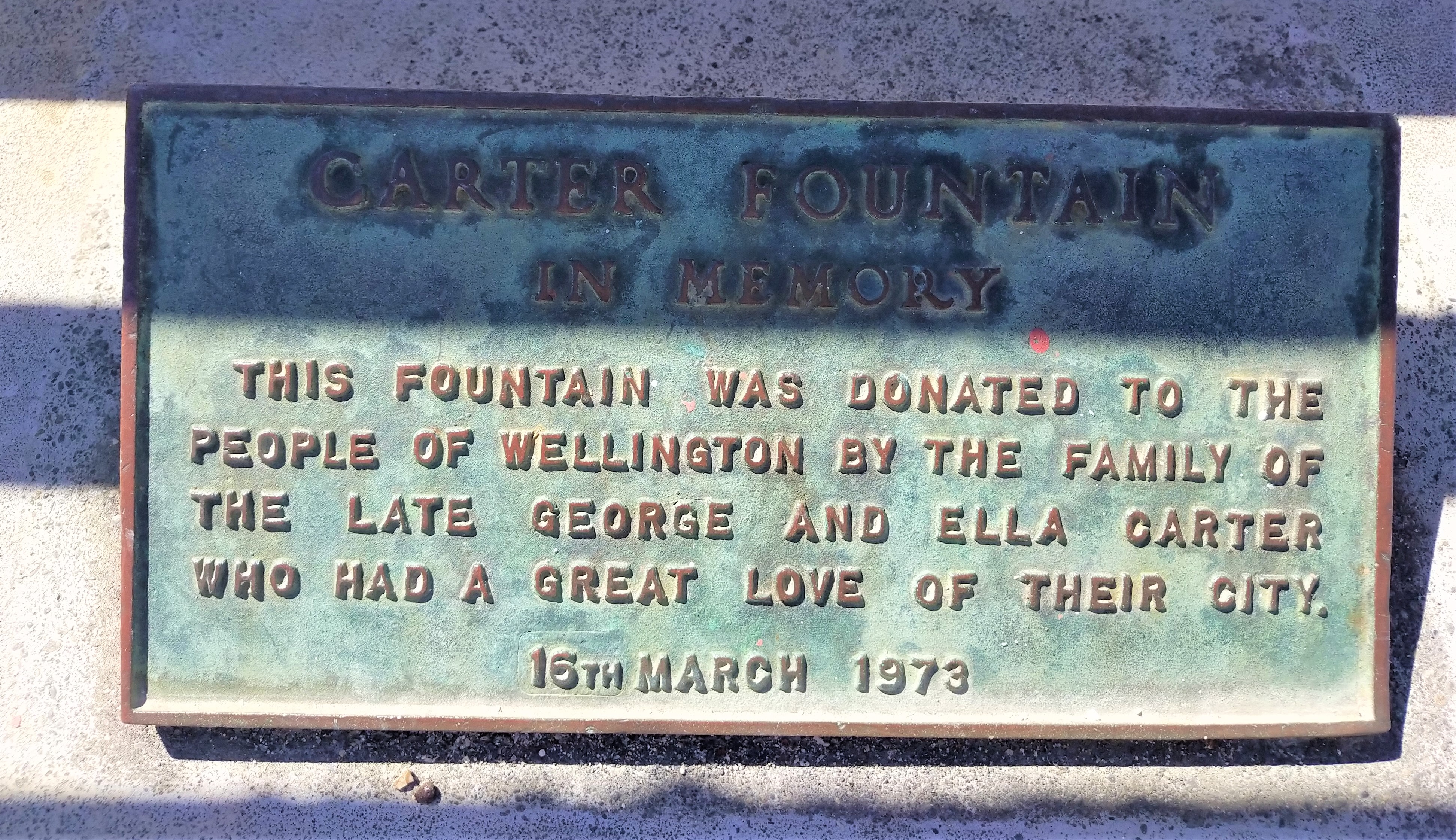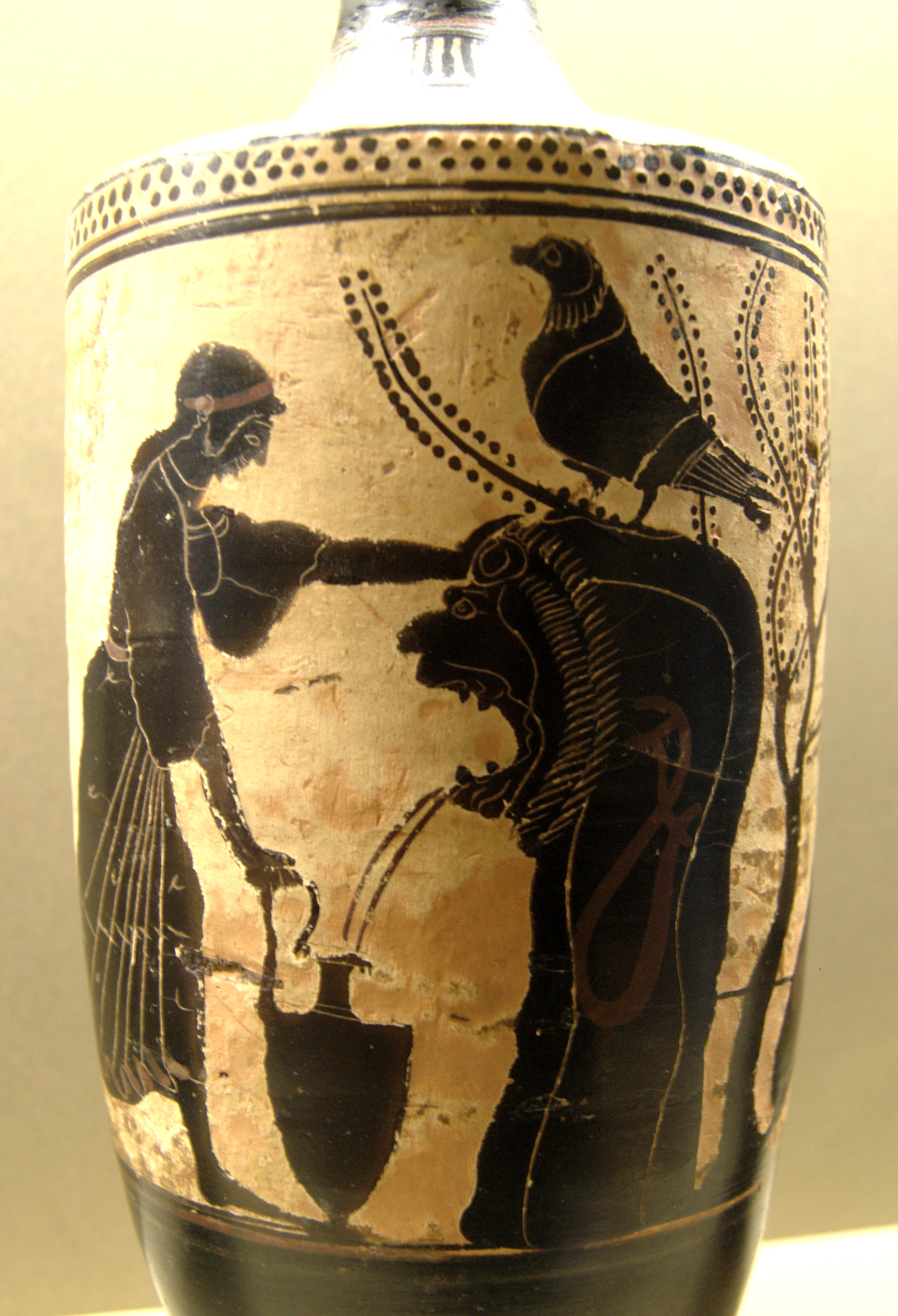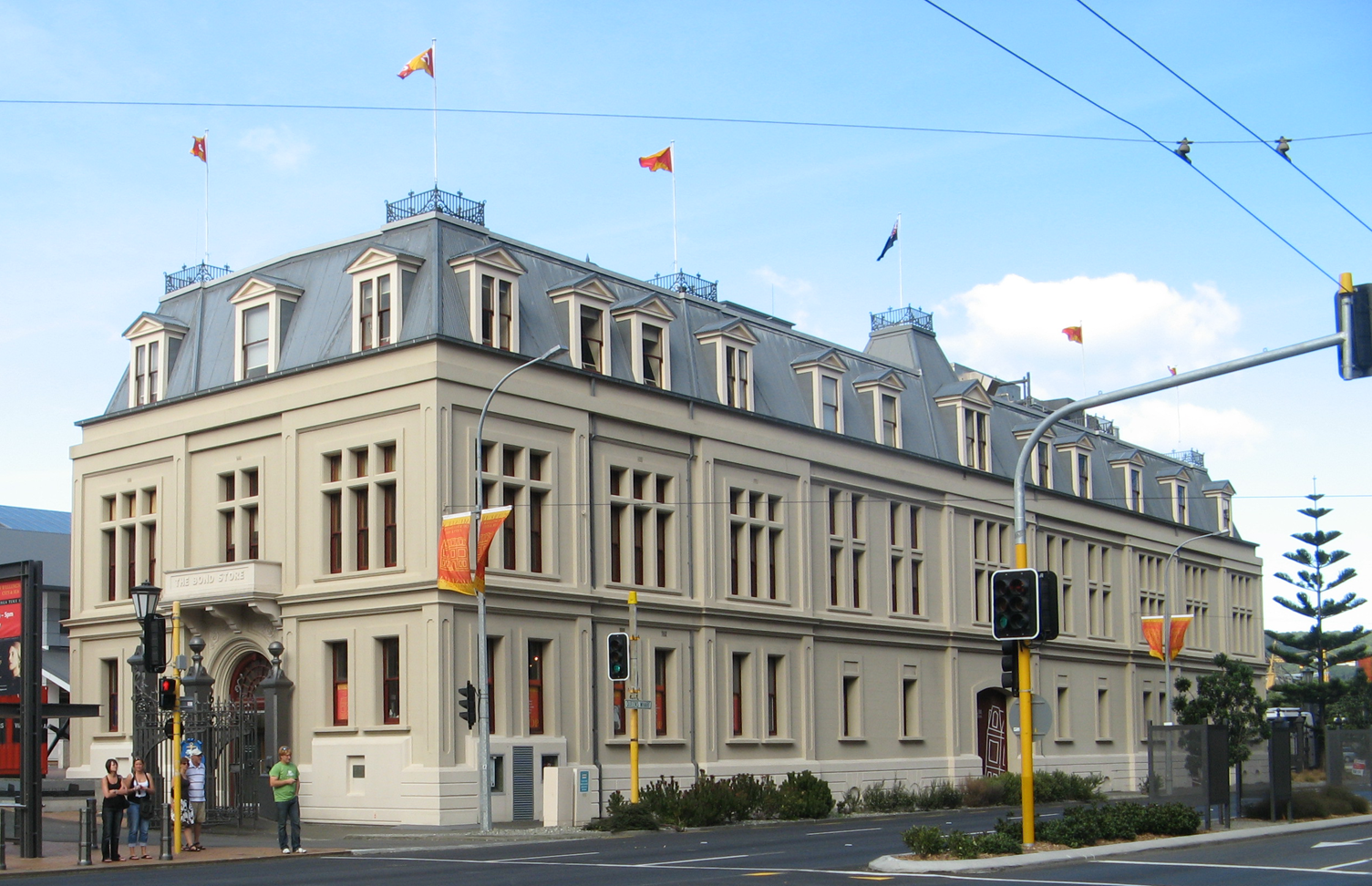|
Carter Fountain
The Carter Fountain is a distinctive feature out in Wellington Harbour from Oriental Bay. Installed in 1973, it was named in memory of the parents of its donor Hugh Carter, who drowned only days after the fountain's inauguration. Background The Carter Fountain was a gift to the city of Wellington from local resident and businessman Hugh Carter, as a tribute to his parents George and Ella Carter and the people of Wellington. A plaque was installed on the band rotunda saying: "Carter Fountain. In Memory. This fountain was donated to the people of Wellington by the family of the late George and Ella Carter, who had a great love of their city. 16th March 1973". Carter was inspired by the Jet d'Eau fountain he saw in Geneva in the early 1960s. Construction began in 1972 and cost NZ$75,000. There was some controversy when the project was announced as some residents objected to the fountain on aesthetic reasons or because it might interfere with rowing, or thought the money it cost co ... [...More Info...] [...Related Items...] OR: [Wikipedia] [Google] [Baidu] |
Fountain Oriental Bay (4420438639)
A fountain, from the Latin "fons" (genitive "fontis"), meaning source or spring, is a decorative reservoir used for discharging water. It is also a structure that jets water into the air for a decorative or dramatic effect. Fountains were originally purely functional, connected to springs or aqueducts and used to provide drinking water and water for bathing and washing to the residents of cities, towns and villages. Until the late 19th century most fountains operated by gravity, and needed a source of water higher than the fountain, such as a reservoir or aqueduct, to make the water flow or jet into the air. In addition to providing drinking water, fountains were used for decoration and to celebrate their builders. Roman fountains were decorated with bronze or stone masks of animals or heroes. In the Middle Ages, Moorish and Muslim garden designers used fountains to create miniature versions of the gardens of paradise. King Louis XIV of France used fountains in the Gardens of ... [...More Info...] [...Related Items...] OR: [Wikipedia] [Google] [Baidu] |
Wellington City Council
Wellington City Council is a territorial authority in New Zealand, governing the country's capital city Wellington, and ''de facto'' second-largest city (if the commonly considered parts of Wellington, the Upper Hutt, Porirua, Lower Hutt and often the Kapiti Coast, are taken into account; these, however have independent councils rather than a supercity governance like Auckland, and so Wellington City is legally only third-largest city by population, behind Auckland and Christchurch). It consists of the central historic town and certain additional areas within the Wellington metropolitan area, extending as far north as Linden and covering rural areas such as Mākara and Ohariu. The city adjoins Porirua in the north and Hutt City in the north-east. It is one of nine territorial authorities in the Wellington Region. Wellington attained city status in 1886. The settlement had become the colonial capital and seat of government by 1865, replacing Auckland. Parliament offic ... [...More Info...] [...Related Items...] OR: [Wikipedia] [Google] [Baidu] |
Fountains In New Zealand
A fountain, from the Latin "fons" (genitive "fontis"), meaning source or spring, is a decorative reservoir used for discharging water. It is also a structure that jets water into the air for a decorative or dramatic effect. Fountains were originally purely functional, connected to springs or aqueducts and used to provide drinking water and water for bathing and washing to the residents of cities, towns and villages. Until the late 19th century most fountains operated by gravity, and needed a source of water higher than the fountain, such as a reservoir or aqueduct, to make the water flow or jet into the air. In addition to providing drinking water, fountains were used for decoration and to celebrate their builders. Roman fountains were decorated with bronze or stone masks of animals or heroes. In the Middle Ages, Moorish and Muslim garden designers used fountains to create miniature versions of the gardens of paradise. King Louis XIV of France used fountains in the Gardens of ... [...More Info...] [...Related Items...] OR: [Wikipedia] [Google] [Baidu] |
Tourist Attractions In Wellington City
Tourism is travel for pleasure or business; also the theory and practice of touring, the business of attracting, accommodating, and entertaining tourists, and the business of operating tours. The World Tourism Organization defines tourism more generally, in terms which go "beyond the common perception of tourism as being limited to holiday activity only", as people "travelling to and staying in places outside their usual environment for not more than one consecutive year for leisure and not less than 24 hours, business and other purposes". Tourism can be domestic (within the traveller's own country) or international, and international tourism has both incoming and outgoing implications on a country's balance of payments. Tourism numbers declined as a result of a strong economic slowdown (the late-2000s recession) between the second half of 2008 and the end of 2009, and in consequence of the outbreak of the 2009 H1N1 influenza virus, but slowly recovered until the COVID- ... [...More Info...] [...Related Items...] OR: [Wikipedia] [Google] [Baidu] |
Monuments And Memorials In New Zealand
A monument is a type of structure that was explicitly created to commemorate a person or event, or which has become relevant to a social group as a part of their remembrance of historic times or cultural heritage, due to its artistic, historical, political, technical or architectural importance. Some of the first monuments were dolmens or menhirs, megalithic constructions built for religious or funerary purposes. Examples of monuments include statues, (war) memorials, historical buildings, archaeological sites, and cultural assets. If there is a public interest in its preservation, a monument can for example be listed as a UNESCO World Heritage Site. Etymology It is believed that the origin of the word "monument" comes from the Greek ''mnemosynon'' and the Latin ''moneo'', ''monere'', which means 'to remind', 'to advise' or 'to warn', however, it is also believed that the word monument originates from an Albanian word 'mani men' which in Albanian language means 'remembe ... [...More Info...] [...Related Items...] OR: [Wikipedia] [Google] [Baidu] |
Scoop (website)
Scoop is a New Zealand Internet news site run by Scoop Media Limited, part of the Scoop Media Cartel. Operational model The website publishes many submitted news and press releases due to their permissive policy. Their website states: "If it's a press release issued in New Zealand, is legible, legal, sane, not hateful and not defamatory we will most probably publish it." In addition to being a general news website, Scoop also contains sub-sites with specific fociWellington.scoop which aggregates Wellington-specific news with editorial comment, and alsPacific.scoopwhich publishes Pacific-related news and is edited by Auckland University of Technology's Pacific Media Centre. As of March 2012, the website claimed to receive 246,500 visitors and 614,500 page impressions per month. Scoop was ranked 3rd by Nielsen Net Ratings in their News Category. History It was established in 1999 by Andrew McNaughton, Ian Llewellyn and Alastair Thompson. In 2003, ''The Guardian'' wrote about ... [...More Info...] [...Related Items...] OR: [Wikipedia] [Google] [Baidu] |
Oriental Bay, Wellington, New Zealand
The Orient is a term for the East in relation to Europe, traditionally comprising anything belonging to the Eastern world. It is the antonym of ''Occident'', the Western World. In English, it is largely a metonym for, and coterminous with, the continent of Asia, loosely classified into the Western Asia, Southeast Asia, South Asia, Central Asia, East Asia, and sometimes including the Caucasus. Originally, the term ''Orient'' was used to designate only the Near East, and later its meaning evolved and expanded, designating also the Middle East, Central Asia, South Asia, Southeast Asia, or the Far East. The term ''oriental'' is often used to describe objects from the Orient; however in the United States it is considered an outdated and often offensive term by some, especially when used to refer to people of East Asian and Southeast Asian descent. Etymology The term "Orient" derives from the Latin word ''oriens'' meaning "east" (lit. "rising" < ''orior'' " rise"). The use of the w ... [...More Info...] [...Related Items...] OR: [Wikipedia] [Google] [Baidu] |
The Dominion Post (Wellington)
''The Dominion Post'' is a metropolitan daily newspaper published in Wellington, New Zealand. It is owned by media business Stuff Ltd, formerly the New Zealand branch of Australian media company Fairfax Media. Weekday issues are now in tabloid format, and its Saturday edition is in broadsheet format. Since 2020 the editor has been Anna Fifield. History ''The Dominion Post'' was created in July 2002 when Independent Newspapers Limited (INL) amalgamated two Wellington printed and published metropolitan broadsheet newspapers, ''The Evening Post'', an evening paper first published on 8 February 1865, and '' The Dominion'', a morning paper first published on Dominion Day, 26 September 1907. ''The Dominion'' was distributed throughout the lower half of the North Island, as far as Taupo, where it met with Auckland's ambitiously named ''The New Zealand Herald''. ''The Evening Post'' was not so widely distributed, but had a much greater circulation than ''The Dominion''. INL so ... [...More Info...] [...Related Items...] OR: [Wikipedia] [Google] [Baidu] |
1989 Local Government Reforms
The 1989 New Zealand local government reform was the most significant reform of local government in New Zealand in over a century. Some 850 local bodies were amalgamated into 86 local authorities, made up of regional and territorial levels. Background The last major local government reform was carried out through the abolition of provincial government. With effect of 1 January 1877, local government was vested in elected borough and county councils. The Counties Bill of 1876 created 63 counties out of the rural parts of the former provinces. Over the years, many new bodies were set up. Some of these bodies were multi-purpose, whilst others (for example harbour boards) were single-purpose. The Local Government Act 1974 consolidated the previous law relating to local government that applied to territorial local authorities, regional and district council bodies. It enabled the establishment of regional councils, but these were not established until the 1989 reform. History The L ... [...More Info...] [...Related Items...] OR: [Wikipedia] [Google] [Baidu] |
Wellington Harbour Board
(Strong but true) , predecessor = , merged = , successor = , formation = , founder = , founding_location = , dissolved = , merger = , type = , tax_id = , registration_id = , status = , purpose = Port operator , professional_title = , headquarters = Wellington, New Zealand , location = , location2 = , additional_location = , additional_location2= , coordinates = , origins = , region = , products = , services = , methods = , fields = , membership = , membership_year = , language = , owner = , sec_gen = , leader_title = , leader_name = , leader_title2 = , leader_name2 = , leader_title3 = , lead ... [...More Info...] [...Related Items...] OR: [Wikipedia] [Google] [Baidu] |
New Zealand Dollar
The New Zealand dollar ( mi, tāra o Aotearoa; sign: $, NZ$; code: NZD) is the official currency and legal tender of New Zealand, the Cook Islands, Niue, the Ross Dependency, Tokelau, and a British territory, the Pitcairn Islands. Within New Zealand, it is almost always abbreviated with the dollar sign ($). "$NZ" or "NZ$" are sometimes used when necessary to distinguish it from other dollar-denominated currencies. Introduced in 1967, the dollar is subdivided into 100 cents. Altogether it has five coins and five banknotes with the smallest being the 10-cent coin; smaller denominations have been discontinued due to inflation and production costs. In the context of currency trading, the New Zealand dollar is sometimes informally called the "Kiwi" or "Kiwi dollar", since the flightless bird, the kiwi, is depicted on its one-dollar coin. It is the tenth most traded currency in the world, representing 2.1% of global foreign exchange market daily turnover in 2019. History Introduc ... [...More Info...] [...Related Items...] OR: [Wikipedia] [Google] [Baidu] |







.jpg)
